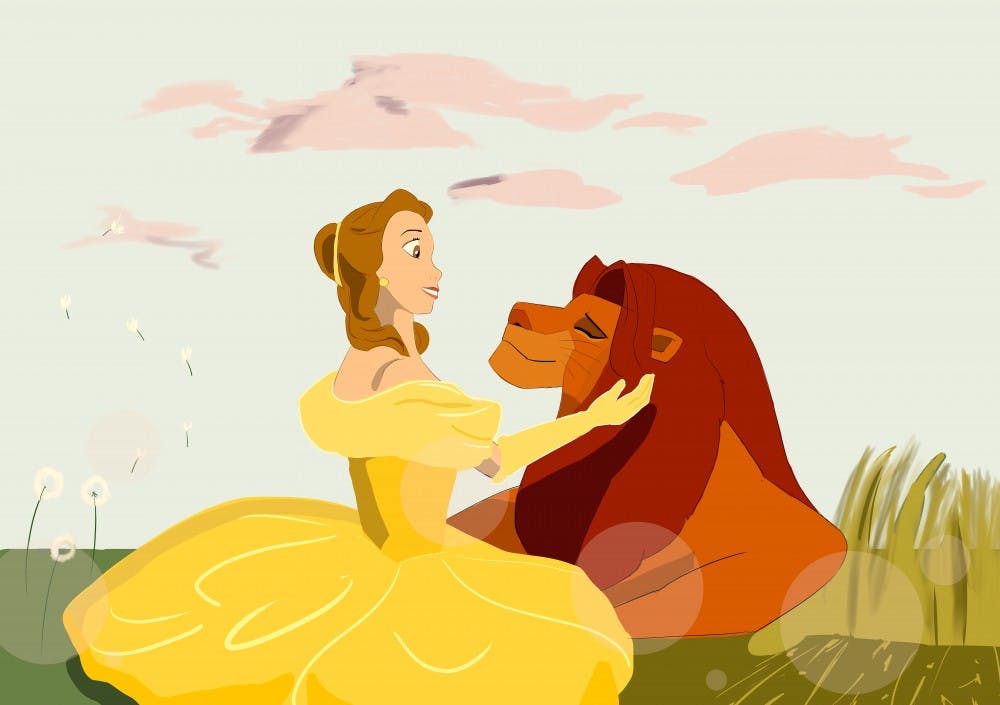I remember the anxious moments of rewinding a VCR tape, pounding my pudgy kid finger on the button and willing it to go faster. We had a whole collection of Disney films on VCR, and even after the major switch to DVDs swept the nation, we kept our tapes out of a sense of what I can only call nostalgia. In 2017, when the live–action Beauty and the Beast hit marquees, I was no exception to the flock of teenage girls paying to rewatch an old classic. I hunkered down in the movie theatre seat with my pulse in the tips of my fingers as I reached for the popcorn in my sister’s lap, all too ready to feel a new sense of enlightenment or excitement from an old story. Let’s just say that I was profoundly disappointed.
Disney needs to stop wasting their time and resources on remaking old movies. Though I know Queen Bey will be breathtaking as Nala in the upcoming live–action remake of “Lion King,” I begrudgingly doubt the film will be anything truly profound. Not to say that all movies need to be profound—because they don’t—but I fail to see the creativity involved in plucking an old script from off the desk of decades prior and simply adding special effects. I grew up loving movies, and love movies to this day, which is why I desperately want some new material.
The issue of representation in the media won’t be resolved by the re–hashing of old movies that perpetuate stale problems. I can name all too many films off the top of my head with cis, white female leads saved by cis, white men. Though many contain entertaining enough plots, kids of today don’t need to consume more of this trope. Disney, with all its resources and power, has the ability to truly dip their toes into spotlighting under–represented groups. In fact, a cannonball is in order. Disney has literally made billions of dollars off of its productions, whether that be film or theatre, so it can afford to take a risk with some new narratives.
Nostalgia can keep a film franchise alive. Popular culture capitalizes on the promise of nostalgia, using our concepts of “fond childhood memories” to sell us the same story with different and more expensive packaging. I wonder the risk of allowing this nostalgic metronome to commandeer our media, and how this perhaps weasels its way into other spheres of our public lives.
Political platforms have been built on the assertion of a regression to “better times.” These “better times” depend on a consumer’s subjectivity, and normally exclude marginalized populations. “Make America Great Again” pivots on the use of the word again. America wasn’t great for huge portions of Americans forty years ago, but cis, white men were definitely allowed certain permissions that are more called into question today. This canonization of the past can be dangerous to those who were most vulnerable in it.
Fashion, TV shows, and music all fall into this trap of nostalgia. To emphasize—I’m wearing a scrunchie on my wrist as I type this. Granted, it’s not the velvet scrunchie that Urban Outfitters is selling for $12, but it is an accessory popularized in the '80s, and up until a few months ago, not something considered “cool.” The cycle of resurgences of old aesthetics spans many aspects of popular culture, making consumption of the tasteful aspects of past years accessible while washing over the things time has corrected. Now, I’m all for scrunchie power, and I love a good romantic comedy trope, but media is so central to our everyday lives that I think it has a responsibility to produce new material current with the climate of today’s pop culture.
We can always watch an old Disney movie, and the creation of new films doesn’t stifle this ability. So why not make some new material? Push some new buttons? Nostalgia has its time and place, but done is its time and place in the movie industry. Agains are boring; bring on the controversy. Bring on the new.







